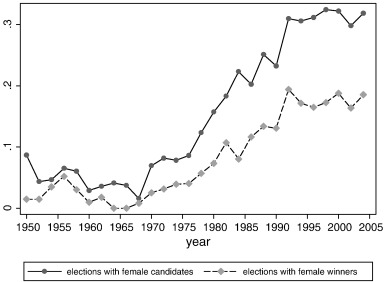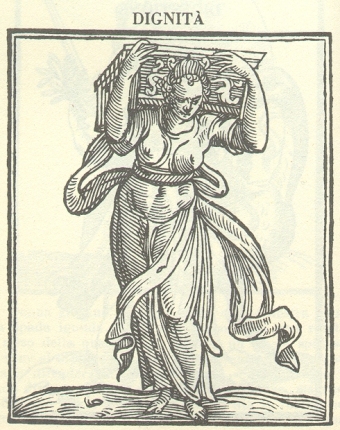|
Ludwig Boltzmann Institut Für Menschenrechte
The Ludwig Boltzmann Institute of Human Rights (BIM; German: Ludwig Boltzmann Institut für Menschenrechte) is a Vienna-based research institute affiliated with the Austrian Ludwig Boltzmann Gesellschaft, that specializes in the area of human rights. History It was founded in 1992 by Felix Ermacora, Manfred Nowak and Hannes Tretter, all three Professors of Law at the University of Vienna. Felix Ermacora († 1995) served as its first director, followed by Manfred Nowak and Hannes Tretter as joint scientific directors (2009–2019). Since 2019 Michael Lysander Fremuth has been scientific director. Fremuth also holds a professorship for Fundamental and Human Rights at the University of Vienna. The institute is located at Freyung 6 in the city center of Vienna/Austria. It cooperates with the Institut für Staats- und Verwaltungsrecht at the University of Vienna. In 1993, the Institute organised and coordinated the activities of more than 3,000 NGO delegates during the World Confere ... [...More Info...] [...Related Items...] OR: [Wikipedia] [Google] [Baidu] |
Vienna
Vienna ( ; ; ) is the capital city, capital, List of largest cities in Austria, most populous city, and one of Federal states of Austria, nine federal states of Austria. It is Austria's primate city, with just over two million inhabitants. Its larger metropolitan area has a population of nearly 2.9 million, representing nearly one-third of the country's population. Vienna is the Culture of Austria, cultural, Economy of Austria, economic, and Politics of Austria, political center of the country, the List of cities in the European Union by population within city limits, fifth-largest city by population in the European Union, and the most-populous of the List of cities and towns on the river Danube, cities on the river Danube. The city lies on the eastern edge of the Vienna Woods (''Wienerwald''), the northeasternmost foothills of the Alps, that separate Vienna from the more western parts of Austria, at the transition to the Pannonian Basin. It sits on the Danube, and is ... [...More Info...] [...Related Items...] OR: [Wikipedia] [Google] [Baidu] |
European Integration
European integration is the process of political, legal, social, regional and economic integration of states wholly or partially in Europe, or nearby. European integration has primarily but not exclusively come about through the European Union and its policies, and can include cultural assimilation and centralisation. The history of European integration is marked by the Roman Empire's consolidation of European and Mediterranean territories, which set a precedent for the notion of a unified Europe. This idea was echoed through attempts at unity, such as the Holy Roman Empire, the Hanseatic League, and the Napoleonic Empire. The devastation of World War I reignited the concept of a unified Europe, leading to the establishment of international organizations aimed at political coordination across Europe. The interwar period saw politicians such as Richard von Coudenhove-Kalergi and Aristide Briand advocating for European unity, albeit with differing visions. Post-World War II Eur ... [...More Info...] [...Related Items...] OR: [Wikipedia] [Google] [Baidu] |
Human Rights Organisations Based In Austria
Humans (''Homo sapiens'') or modern humans are the most common and widespread species of primate, and the last surviving species of the genus ''Homo''. They are Hominidae, great apes characterized by their Prehistory of nakedness and clothing#Evolution of hairlessness, hairlessness, bipedality, bipedalism, and high Human intelligence, intelligence. Humans have large Human brain, brains, enabling more advanced cognitive skills that facilitate successful adaptation to varied environments, development of sophisticated tools, and formation of complex social structures and civilizations. Humans are Sociality, highly social, with individual humans tending to belong to a Level of analysis, multi-layered network of distinct social groups — from families and peer groups to corporations and State (polity), political states. As such, social interactions between humans have established a wide variety of Value theory, values, norm (sociology), social norms, languages, and traditions (co ... [...More Info...] [...Related Items...] OR: [Wikipedia] [Google] [Baidu] |
Human Rights Education
Human rights education (HRE) is the learning process that seeks to build knowledge, values, and proficiency in the rights that each person is entitled to. This education teaches students to examine their own experiences from a point of view that enables them to integrate these concepts into their values. Decision-making, and daily situations. According to Amnesty International, HRE is a way to empower people is by training them so that their skills and behaviors promote dignity and equality within their communities, societies, and throughout the world. The "National Economics and Social Rights Initiative" stated the importance of Non-Discrimination in HRE. Governments must ensure that it is exercised without bias to race, gender, religion, language, national or social origin, political or personal opinion, birth, or any status. All students, parents and communities possess the right to take part in decisions affecting their respective schools and the right to education. Hi ... [...More Info...] [...Related Items...] OR: [Wikipedia] [Google] [Baidu] |
Human Trafficking
Human trafficking is the act of recruiting, transporting, transferring, harboring, or receiving individuals through force, fraud, or coercion for the purpose of exploitation. This exploitation may include forced labor, sexual slavery, or other forms of commercial sexual exploitation. It is considered a serious violation of human rights and a form of modern slavery. Efforts to combat human trafficking involve international laws, national policies, and Non-governmental organization, non-governmental organizations. Human trafficking can occur both within a single country or across national borders. It is distinct from people smuggling, which involves the consent of the individual being smuggled and typically ends upon arrival at the destination. In contrast, human trafficking involves exploitation and a lack of consent, often through force, fraud, or coercion. Human trafficking is widely condemned as a violation of human rights by international agreements such as the United Nat ... [...More Info...] [...Related Items...] OR: [Wikipedia] [Google] [Baidu] |
Children's Rights
Children's rights or the rights of children are a subset of human rights with particular attention to the rights of special protection and care afforded to minors."Children's Rights" , Amnesty International. Retrieved 2/23/08. The 1989 Convention on the Rights of the Child (CRC) defines a child as "any human being below the age of eighteen years, unless under the law applicable to the child, Age of majority, majority is attained earlier."Convention on the Rights of the Child G.A. res. 44/25, annex, 44 U.N. GAOR Supp. (No. 49) at 167, U.N. Doc. A/44/49 (1989), entered into force Sept. 2 1990. Children's rights includes t ... [...More Info...] [...Related Items...] OR: [Wikipedia] [Google] [Baidu] |
Women's Rights
Women's rights are the rights and Entitlement (fair division), entitlements claimed for women and girls worldwide. They formed the basis for the women's rights movement in the 19th century and the feminist movements during the 20th and 21st centuries. In some countries, these rights are institutionalized or supported by law, local custom, and behavior, whereas in others, they are ignored and suppressed. They differ from broader notions of human rights through claims of an inherent historical and traditional bias against the exercise of rights by women and girls, in favor of men and boys.Hosken, Fran P., 'Towards a Definition of Women's Rights' in ''Human Rights Quarterly'', Vol. 3, No. 2. (May 1981), pp. 1–10. Issues commonly associated with notions of women's rights include the right to bodily integrity and autonomy, to be free from sexual violence, to Women's suffrage, vote, to hold public office, to enter into legal contracts, to have equal rights in family law, Right to ... [...More Info...] [...Related Items...] OR: [Wikipedia] [Google] [Baidu] |
Diversity (politics)
Diversity within groups is a key concept in sociology and political science that refers to the degree of difference along socially significant identifying features among the members of a purposefully defined group, such as any group differences in racial or ethnic classifications, age, gender, religion, philosophy, politics, culture, language, physical abilities, socioeconomic background, sexual orientation, gender identity, intelligence, physical health, mental health, genetic attributes, personality, behavior, or attractiveness. When measuring human diversity, a diversity index exemplifies the likelihood that two randomly selected residents have different ethnicities. If all residents are of the same ethnic group it is zero by definition. If half are from one group and half from another, it is 50. The diversity index does not take into account the willingness of individuals to cooperate with those of other ethnicities. International human rights The Convention on the Ri ... [...More Info...] [...Related Items...] OR: [Wikipedia] [Google] [Baidu] |
Anti-discrimination Law
Anti-discrimination law or non-discrimination law refers to legislation designed to prevent discrimination against particular groups of people; these groups are often referred to as protected groups or protected classes. Anti-discrimination laws vary by jurisdiction with regard to the types of discrimination that are prohibited, and also the groups that are protected by that legislation. Commonly, these types of legislation are designed to prevent discrimination in employment, housing, education, and other areas of social life, such as public accommodations. Anti-discrimination law may include protections for groups based on sex, age, race, ethnicity, nationality, disability, mental illness or ability, sexual orientation, gender, gender identity/expression, sex characteristics, religion, creed, or individual political opinions. Anti-discrimination laws are rooted in principles of equality, specifically, that individuals should not be treated differently due to the characteri ... [...More Info...] [...Related Items...] OR: [Wikipedia] [Google] [Baidu] |
Dignity
Dignity is a human's contentment attained by satisfying physiological needs and a need in development. The content of contemporary dignity is derived in the new natural law theory as a distinct human good. As an extension of the Enlightenment-era concept of human rights, dignity is considered the right of a person to be valued and respected for their own sake, and to be treated ethically. In this context, it is of significance in morality, ethics, law and politics, and the term is often used to describe personal conduct as "behaving with dignity". Dignity is also recognized in the Universal Declaration of Human Rights of 1948. In Article 1, it is stipulated that 'All human beings are born free and equal in dignity and rights. They are endowed with reason and conscience and should act towards one another in a spirit of brotherhood'. Etymology The English word "dignity", attested from the early 13th century, comes from Latin concept of ', variously translated as "worthiness ... [...More Info...] [...Related Items...] OR: [Wikipedia] [Google] [Baidu] |
Research Institute
A research institute, research centre, or research organization is an establishment founded for doing research. Research institutes may specialize in basic research or may be oriented to applied research. Although the term often implies natural science research, there are also many research institutes in the social science as well, especially for sociological and historical research purposes. Famous research institutes In the early medieval period, several astronomical observatories were built in the Islamic world. The first of these was the 9th-century Baghdad observatory built during the time of the Abbasid caliph al-Ma'mun, though the most famous were the 13th-century Maragheh observatory, and the 15th-century Ulugh Beg Observatory. The Kerala School of Astronomy and Mathematics was a school of mathematics and astronomy founded by Madhava of Sangamagrama in Kerala, India. The school flourished between the 14th and 16th centuries and the original discoveries of t ... [...More Info...] [...Related Items...] OR: [Wikipedia] [Google] [Baidu] |









